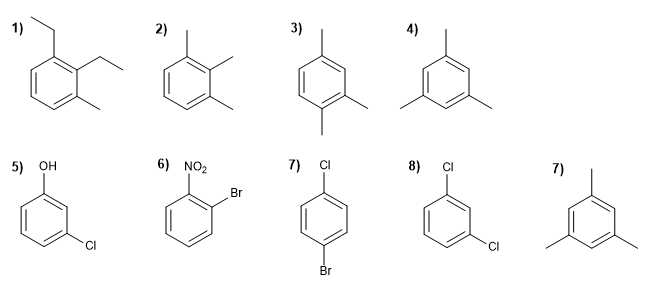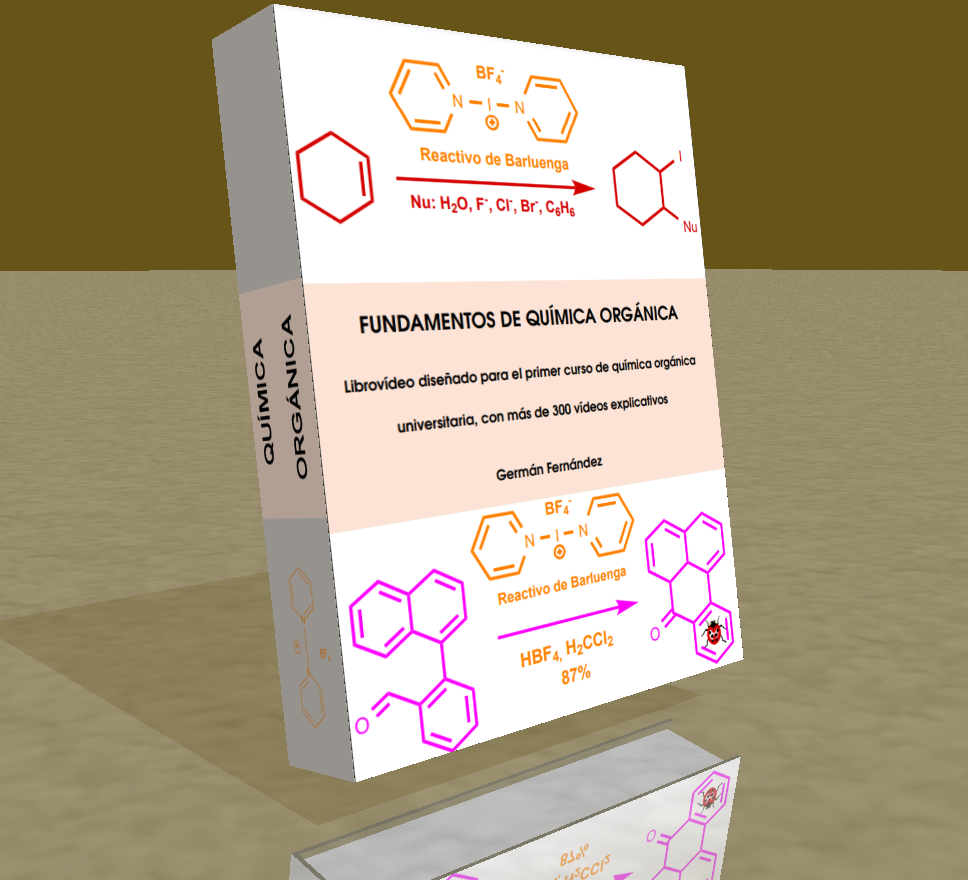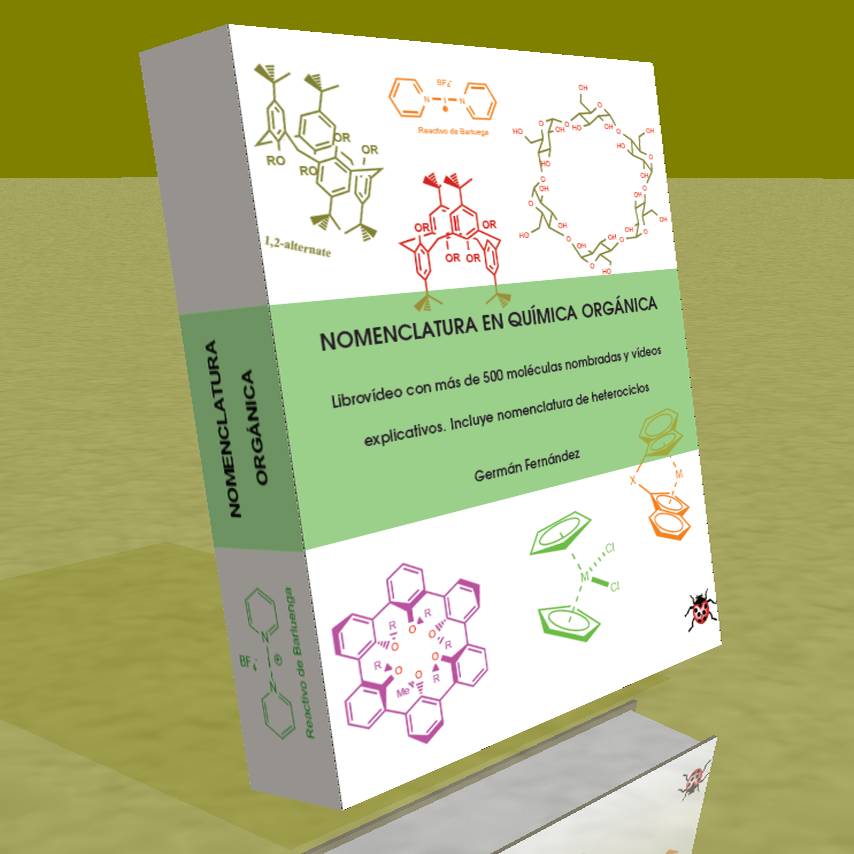Benzene problems
- Details
- Germán Fernández
- Benzene problems
- Hits: 65028
Formulate the following derivatives of benzene:
| 1) 1-Ethyl-3-methylbenzene 2) p-Dimethylbenzene 3) 1-Butyl-3-ethylbenzene 4) o-Chloronitrobenzene 5) m-Bromochlorobenzene 6) p-Diisopropylbenzene 7) 1-tert-Butyl-4-methylbenzene 8) o-Allylvinylbenzene 9) m-Ethylpropylbenzene 10) 2-Ethyl-1,4-dimethylbenzene | 11) 4,5-Diphenyl-1-octene 12) 2-phenyl-4-methylhexene 13) 1-(methylethyl)-2-(2-methylpropyl)benzene 14) 6-Phenyl-3-methylhexa-1,4-diene 15) cis-1-phenyl-1-butene 16) trans-2-phenyl-2-butene 17) 7-Ethyl-4,5-diphenyldec-5-en-1-yne 18) m-Dicyclohexylbenzene 19) p-Cyclobutylcyclobutylbenzene 20) 3-(1,1-Diphenylethyl)-3-methylhex-1-en-5-yne. |
- Details
- Germán Fernández
- Benzene problems
- Hits: 23643
Prepares from benzene the following derivatives with high yield:

- Details
- Germán Fernández
- Benzene problems
- Hits: 34159
Starting from benzene or toluene, develop the synthesis of the following compounds:
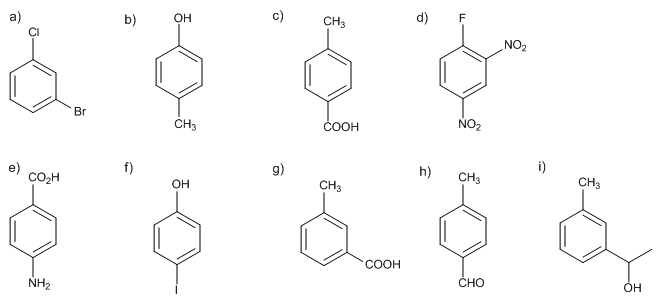
- Details
- Germán Fernández
- Benzene problems
- Hits: 19588
Explain the mechanism of the following reaction:

- Details
- Germán Fernández
- Benzene problems
- Hits: 13836
The rates of nucleophilic substitution of nitrohalogenobenzenes depend on the halogen displaced. The order F>> Cl> Br> I, is the opposite of that observed for fitness as a leaving group in most other substitution reactions. How is this information consistent with the two-step mechanism for nucleophilic aromatic substitution?
- Details
- Germán Fernández
- Benzene problems
- Hits: 16731
Describe a method from benzene to carry out the following transformations.

- Details
- Germán Fernández
- Benzene problems
- Hits: 15427
Arrange the following compounds in increasing order of nucleophilic aromatic substitution reaction rate:

- Details
- Germán Fernández
- Benzene problems
- Hits: 14830
Chlorpromazine is a drug used for the treatment of certain mental disorders (schizophrenia, acute psychosis, delusions, etc.). Its synthesis can be carried out according to the following scheme. Complete it and indicate what type of reaction occurs in each case.
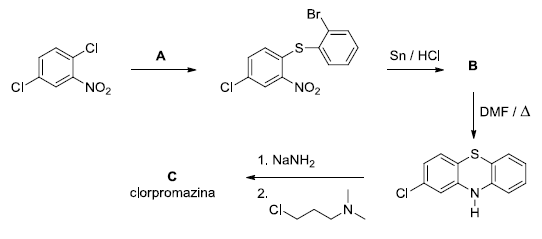
- Details
- Germán Fernández
- Benzene problems
- Hits: 15880
Roberts et al. carried out an important experiment to prove the existence of benzine. Chlorobenzene labeled with 14C at the position to which the chlorine was attached was treated with sodium amide in liquid ammonia and the aniline formed was analyzed for the 14C position. The results are indicated in the figure. Show how these data are consistent with the benzyne intermediate.

- Details
- Germán Fernández
- Benzene problems
- Hits: 3112
Propose a synthesis of 1,3-dibromo-2-propylbenzene from benzene

